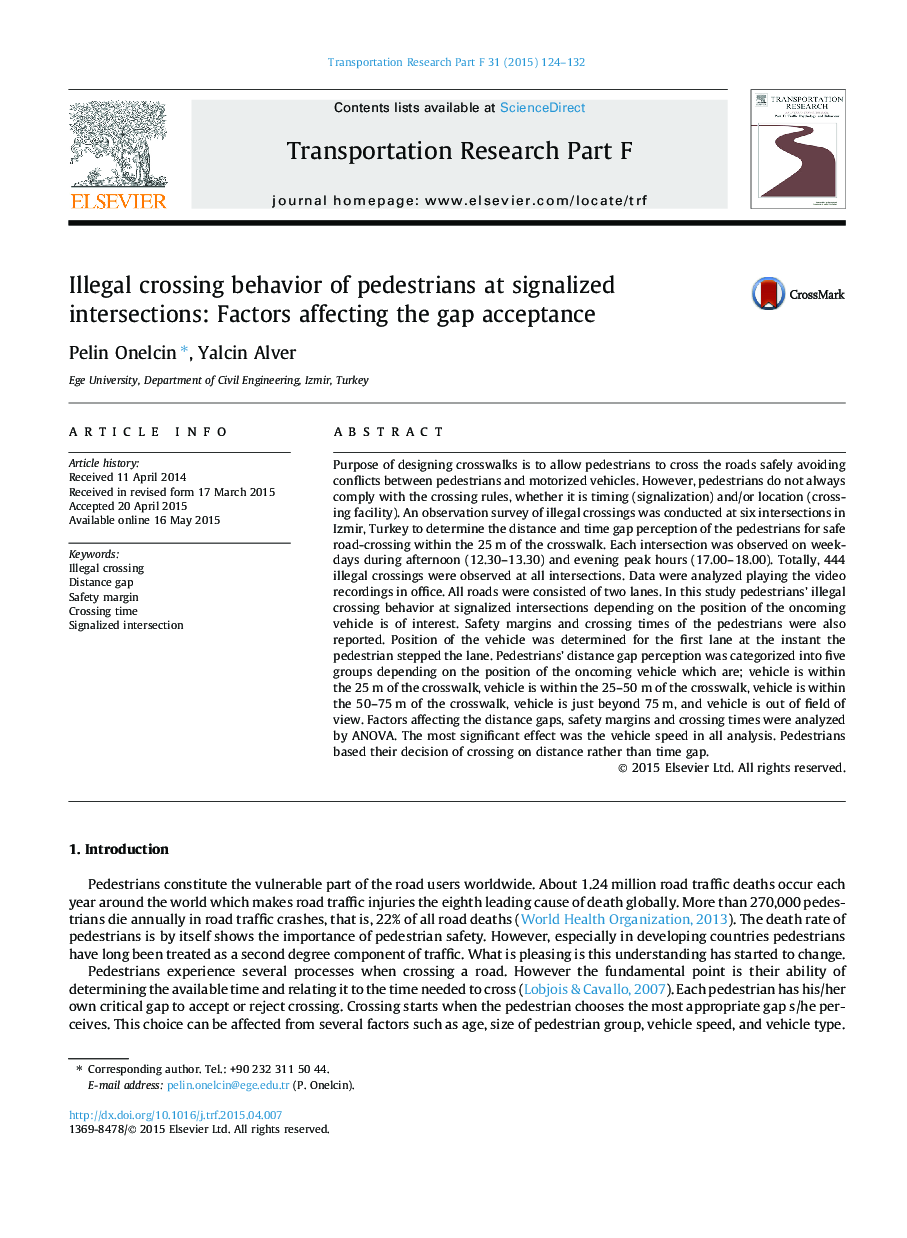| کد مقاله | کد نشریه | سال انتشار | مقاله انگلیسی | نسخه تمام متن |
|---|---|---|---|---|
| 897667 | 1472452 | 2015 | 9 صفحه PDF | دانلود رایگان |
• Pedestrians’ illegal crossing behaviors were observed at signalized intersections.
• Factors affecting safety margin, crossing time and distance gap were analyzed.
• The ANOVA analyses were conducted using the data extracted from video recordings.
• Pedestrians based their decision on distance rather than time gap.
Purpose of designing crosswalks is to allow pedestrians to cross the roads safely avoiding conflicts between pedestrians and motorized vehicles. However, pedestrians do not always comply with the crossing rules, whether it is timing (signalization) and/or location (crossing facility). An observation survey of illegal crossings was conducted at six intersections in Izmir, Turkey to determine the distance and time gap perception of the pedestrians for safe road-crossing within the 25 m of the crosswalk. Each intersection was observed on weekdays during afternoon (12.30–13.30) and evening peak hours (17.00–18.00). Totally, 444 illegal crossings were observed at all intersections. Data were analyzed playing the video recordings in office. All roads were consisted of two lanes. In this study pedestrians’ illegal crossing behavior at signalized intersections depending on the position of the oncoming vehicle is of interest. Safety margins and crossing times of the pedestrians were also reported. Position of the vehicle was determined for the first lane at the instant the pedestrian stepped the lane. Pedestrians’ distance gap perception was categorized into five groups depending on the position of the oncoming vehicle which are; vehicle is within the 25 m of the crosswalk, vehicle is within the 25–50 m of the crosswalk, vehicle is within the 50–75 m of the crosswalk, vehicle is just beyond 75 m, and vehicle is out of field of view. Factors affecting the distance gaps, safety margins and crossing times were analyzed by ANOVA. The most significant effect was the vehicle speed in all analysis. Pedestrians based their decision of crossing on distance rather than time gap.
Journal: Transportation Research Part F: Traffic Psychology and Behaviour - Volume 31, May 2015, Pages 124–132
